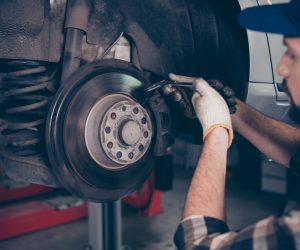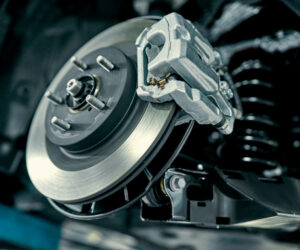As the saying goes, if you are unable to see the truck mirrors, the truck driver cannot see you. When a big rig cannot see you, this is because of the truck’s blind spots. All drivers should be aware of these blind spots.

It is important to stay alert when driving to keep from causing accidents. Large trucks have huge blind spots, and it takes all drivers on the road to be aware of these of to prevent accidents.
Be Aware of Passenger Cars
Being aware of your surroundings while driving makes all the difference in your trip. Large trucks cannot see cars that linger beside them if the truck driver decides to make a lane change quickly. Also, since trucks sit up higher, there is a higher risk that the truck driver may not see the car if it cuts back in front of the truck after passing. When driving, be sure to give ample space when passing. This also goes for cars that are tail-gaiting larger trucks. If the truck driver needs to hit the brakes suddenly, the car will likely rear-end the truck.
Tips to Minimize Blind Spot Accidents
When you are driving and must turn your head to look over your shoulder, this takes your eyes away from the road. Drivers should always have their mirrors adjusted properly before leaving for their trip. Doing so can help prevent accidents.
Here are some suggestions to minimize your truck blind spots:
- Driver-side mirror: Sitting with your hands on the steering wheel, lean to the left. Adjust your mirror until you can see the truck/trailer on the inside edge of the reflected image.
- Passenger-side mirror: Lean your head toward the center of the vehicle. Adjust the mirror until the right side of the truck/trailer appears on the inside edge of the mirror.
- Now, sitting in your normal driving position, begin driving to test the adjustments.
These easy adjustments won’t eliminate blind spots completely, but having your mirrors adjusted properly mirrors can make your driving experience safer.
Having additional mirrors helps reduce blind spots. Drivers should not take their attention away from traffic while using these mirrors. There are other options for additional safety measures that drivers can take.
Truckers can install audible tones, back-up sensors, and wide-angle cameras, especially for the right-side door. Fish-eye mirrors can help alert the driver of oncoming traffic from the back, left, and right side of the truck. The front sensors will notify the driver when a car has cut in front of them or has drifted back into the frontal no-zone. Even with these extra safety measures, it is extremely important for truck drivers to know their trucks and where their blind spots are located. This will help prevent the number of accidents and fatalities that drivers face.
Where is a Truck’s Blind Spot
It is important for all truck drivers to know all the blind spots on their trucks. The blind spots are located:
- Directly behind the truck
- On each side of the truck that spans several lanes
- Directly in front of the truck
- One lane to the right
As a truck turns to the right, the driver cannot see if there is a vehicle directly next to them.
When a driver is on a long haul, there are times when it is easy to get in a zone and not be completely alert to upcoming traffic. However, it is important to stay focused as it only takes a split second for an accident to occur.
It can be frustrating for drivers if cars linger next to them, and often, there is no way around them on busy roads. All drivers should be aware of the situation going on around them. Being aware of their situation is important so they are fully prepared if they need to make a lane change or pull off to the side of the road in an emergency.
As an owner-operator, you should make it your number one goal to prevent all accidents and fatalities by staying alert, well-prepared, and aware of your surroundings.



 Despite COVID-19 cases still rising, the Commercial Vehicle Safety Alliance has announced that this week Brake Safety Week 2020 wi...
Despite COVID-19 cases still rising, the Commercial Vehicle Safety Alliance has announced that this week Brake Safety Week 2020 wi...

